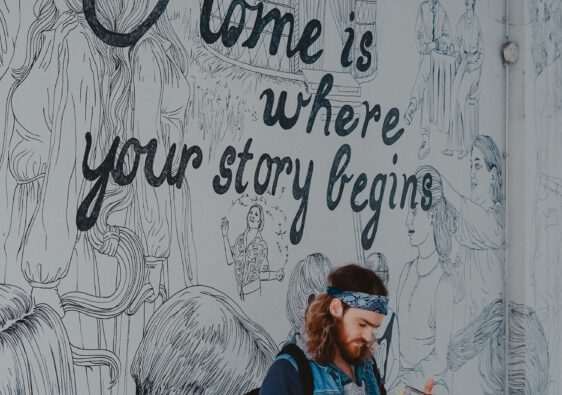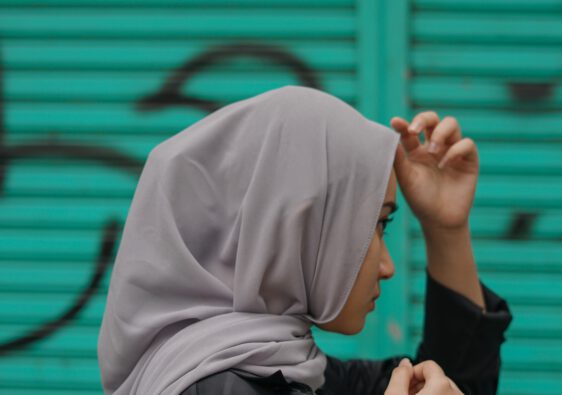The Democratisation of Cultural Preservation
Imagine a world where every nation, regardless of economic stature, has the capacity to safeguard its cultural heritage indefinitely. Every folktale, idiom, poem, song, and even the most fleeting joke—preserved and accessible through a simple prompt. This vision is not science fiction; it is the promise of Sovereign AI.
Traditional custodians of culture—museums, libraries, archives, and human storytellers, artists, and artisans—are often constrained by physical space, limited funding, the fragility of materials, and the inherent limitations of human memory and lifespan. Oral traditions, for instance, rely on the meticulous passing of knowledge from one generation to the next, which can lead to gradual alterations or loss of information over time. AI not only levels this playing field but redefines it entirely.
Economic Impact
By transcending the limitations of physical infrastructures, AI is revolutionizing cultural preservation. It dismantles traditional barriers, making the safeguarding of heritage not just more accessible but also more dynamic and interactive. Digitisation and AI-driven archiving transform cultural assets into living, breathing entities that can be explored and appreciated by anyone, anywhere, at any time—turning preservation into a cost-effective reality for all nations.
- Case in Point: The Smithsonian Institution, one of the world’s largest museum complexes, harnesses AI to digitize millions of artifacts, ranging from ancient fossils to historical manuscripts. This monumental task goes beyond simply scanning items; AI algorithms meticulously catalog, analyze, and even help restore artifacts digitally. The initiative not only protects these treasures from physical degradation but also democratizes access, allowing a global audience to engage with humanity’s collective heritage regardless of their ability to visit in person.
Accessibility
AI is tearing down the walls that once confined cultural treasures, making them accessible to the entire world.Cultural artifacts, historical documents, and artistic masterpieces—once limited to physical locations and available only to those who could visit in person—are now just a click away for anyone with internet access. This unprecedented accessibility is fostering a more inclusive and interconnected understanding of our diverse global heritage.
- Case in Point: Projects like Google Arts & Culture are at the forefront of this digital renaissance. By leveraging AI technology, they have brought the collections of over 2,000 cultural institutions online, transforming how we experience art and history. From the comfort of your home, you can now:
- Explore High-Resolution Artworks: Zoom into the brushstrokes of Van Gogh’s “Starry Night” or the intricate details of the Taj Mahal, appreciating them in ways even museum-goers can’t.
- Take Virtual Museum Tours: Wander through the halls of the Louvre in Paris, The Metropolitan Museum of Art in New York, or the Tokyo National Museum, guided by AI-enhanced narrations that provide context and stories behind the exhibits.
- Engage with Interactive Exhibits: Participate in virtual reality experiences, such as stepping inside a Frida Kahlopainting or witnessing historical events recreated through immersive technologies.
Geopolitical Implications: The Rise of “Smart Power”
In the realm of international relations, nations traditionally wield hard power—military and economic might—to influence global affairs. Alongside this, soft power, which encompasses cultural influence and diplomacy, plays a critical role in shaping perceptions and fostering alliances. The advent of Sovereign AI introduces a new dimension: “smart power.” This concept embodies the strategic use of AI to amplify a nation’s cultural presence and influence on the global stage.
Cultural Diplomacy Enhanced by AI
AI-curated experiences are revolutionising cultural diplomacy, offering innovative avenues for nations to share their heritage and values.
- Virtual Museums and Exhibitions: Countries are creating immersive virtual museums that leverage AI to provide personalised tours, interactive exhibits, and multilingual support.
- For example, Japan has launched AI-powered virtual tours of its national museums, allowing global audiences to experience Japanese art and history from anywhere in the world. The Tokyo National Museumoffers virtual galleries enhanced by AI-driven narration and interactive features, bridging the gap between physical and digital experiences.
- Interactive Cultural Exchanges: AI facilitates real-time cultural exchanges through language translation, augmented reality (AR), and virtual reality (VR), breaking down language barriers and fostering mutual understanding.
- China’s Confucius Institutes are exploring AI language platforms to teach Mandarin globally, enhancing cultural exchange and learning. AI-powered language apps and chatbots enable users worldwide to engage with Chinese culture interactively.
- AI-Driven Art Installations: Nations are commissioning AI-generated art that blends traditional motifs with modern technology, showcasing innovation while honoring heritage.
- At international events like the World Expo, countries present AI art installations that captivate global audiences. The UAE’s pavilion at Expo 2020 Dubai featured AI art reflecting its cultural heritage and futuristic vision, demonstrating how technology and tradition can coexist harmoniously.
Influence Without Borders
By harnessing AI, nations can extend their cultural influence beyond traditional geopolitical constraints, subtly promoting their values and traditions on a global scale.
- Global Entertainment Dissemination: AI algorithms recommend cultural content—music, films, literature—to international audiences based on their preferences, expanding a nation’s cultural reach.
- Streaming platforms like Netflix and Spotify use AI to suggest foreign content to users, aiding in the global spread of specific cultures. For instance, the popularity of Spanish series like “Money Heist” and Korean dramas like “Squid Game” has been amplified through AI-driven recommendations.
- Social Media and AI Bots: AI-powered social media bots can engage with global users, sharing cultural facts, stories, and traditions in an interactive manner.
- Example: Visit Korea’s Chatbots provide travel tips, cultural insights, and language assistance to potential tourists, enhancing interest in Korean culture and encouraging tourism.
South Korea’s Use of AI to Amplify Soft Power
South Korea exemplifies how AI can bolster cultural influence without borders.
- AI in K-Pop and Entertainment:
- Content Personalisation: AI analyses global audience preferences to tailor K-pop content, making it more appealing to diverse markets.
- Entertainment companies like SM Entertainment use AI to determine trends, helping artists like BTS and Blackpink achieve international success. AI-driven analytics guide music production, marketing strategies, and fan engagement tactics.
- Virtual Idols: AI-generated virtual idols, such as Eternity, perform songs and interact with fans, blending technology with pop culture.
- These virtual artists expand the reach of K-pop by appealing to tech-savvy audiences worldwide, pushing the boundaries of entertainment.
- Content Personalisation: AI analyses global audience preferences to tailor K-pop content, making it more appealing to diverse markets.
- AI-Driven Language Services:
- Real-Time Translation: AI translation apps facilitate communication between Korean artists and international fans.
- Apps like Papago by Naver provide accurate translations, enhancing fan engagement across language barriers and fostering a global community.
- Real-Time Translation: AI translation apps facilitate communication between Korean artists and international fans.
- Cultural Exports through AI Platforms:
- Webtoons and Gaming: AI recommends Korean webtoons (digital comics) and games to global users based on their interests.
- Platforms like LINE Webtoon employ AI to suggest Korean content, promoting Korean storytelling traditions and expanding their international fanbase.
- Webtoons and Gaming: AI recommends Korean webtoons (digital comics) and games to global users based on their interests.
AI as a Catalyst for Cultural Evolution
AI’s role as a cultural guardian extends beyond preservation; it becomes an agent of evolution.
Collaborative Creation
AI can analyse patterns, synthesise styles, and generate new content based on vast cultural datasets, leading to a renaissance in artistic expression.
- Artists are collaborating with AI, feeding algorithms compositions from various genres, resulting in innovative sounds that blend different cultural influences.
- Example: Musician Taryn Southern co-produced her album “I AM AI” using AI tools that composed melodies and harmonies, exploring new frontiers in music creation.
- In Visual Arts:
- AI-generated artworks like “Portrait of Edmond de Belamy”, created by the collective Obvious, challenge traditional notions of authorship and creativity, sparking debates and expanding artistic horizons.
Bridging Centuries and Continents
AI is acting as a bridge across time and space, connecting disparate cultural elements to inspire works that transcend geographical boundaries and historical eras. This convergence fosters a global cultural synthesis, enabling the creation of art, literature, music, and fashion that celebrate diversity while highlighting unique traditions.
AI in Literature and Storytelling
By analyzing vast amounts of literary works from different cultures and periods, AI can generate new narratives that weave together diverse traditions.
- Example: The AI-generated film script “Sunspring”, created by an AI trained on a trove of science fiction screenplays, blends classic sci-fi tropes with unexpected dialogue. This showcases how AI can amalgamate various narrative elements to create new forms of storytelling that are both innovative and reflective of multiple cultural influences.
Cultural Fusion in Music and Art
AI algorithms can blend musical structures and artistic styles from different cultures, producing innovative compositions and artworks.
- Art: AI programs such as “StyleGAN” generate artworks that merge techniques from various artistic traditions, like combining impressionist styles with Japanese Ukiyo-e woodblock prints, resulting in visuals that are both familiar and novel.
- Music: Projects like “EMPIRES” utilize AI to combine Western classical music with traditional Chinese melodies, creating pieces that honor both musical heritages and introduce audiences to hybrid sounds.
Innovation in Fashion
Designers employ AI to merge traditional clothing patterns and styles from different cultures, crafting unique fashion pieces that celebrate global heritage.
- Example: AI assists designers in integrating African Ankara prints with Japanese kimono silhouettes, producing garments that are stylish and culturally rich. This not only pushes the boundaries of fashion but also promotes appreciation for diverse cultural aesthetics.
The blending of cultural elements through AI fosters empathy, cross-cultural understanding, and innovative collaboration. However, this cultural synthesis raises important ethical considerations, particularly around cultural appropriation versus appreciation. It is vital to ensure that the fusion of cultural traditions respects the source cultures, avoiding exploitation or misrepresentation. Involving cultural experts and community representatives can help provide context and authenticity. Moreover, the preservation of cultural identity is crucial, as the risk of diluting unique cultural aspects remains high. Balancing the integration of cultural elements with efforts to celebrate and protect individual identities is essential to prevent homogenization. By thoughtfully merging elements across time and continents, AI can write a new chapter in global culture—one that is inclusive, innovative, and respectful of the diverse traditions that shape humanity. This approach not only enriches the creative landscape but also strengthens the interconnectedness of our global community.
Challenges: Homogenisation, Authenticity, and Bias
Despite its potential, this new frontier presents significant challenges that must be addressed.
Cultural Homogenisation
- Risk of Dilution: If AI becomes too proficient at blending cultural influences, we may inadvertently erode the distinctiveness of individual cultures, leading to a homogenised global culture.
- The widespread adoption of AI-curated content risks promoting a limited set of popular cultures while overshadowing less dominant ones.
- Preserving Uniqueness: Balancing AI’s integrative capabilities with efforts to maintain and celebrate cultural uniqueness is essential.
- Solution: Cultural institutions must ensure that AI tools are designed to highlight and preserve the unique aspects of each culture, rather than blending them into indistinguishable amalgams. Incorporating cultural context and specificity into AI algorithms can help maintain diversity.
Authenticity Concerns
- Original vs. AI-Generated Content: As AI-generated art and artefacts proliferate, distinguishing between authentic cultural expressions and AI approximations becomes challenging.
- The sale of AI-generated artwork, such as “Portrait of Edmond de Belamy,” raises questions about authorship and the value placed on human creativity versus machine production.
- Valuation of Cultural Works: This blurring of lines could impact how societies value originality, craftsmanship, and the historical significance of cultural artefacts.
- Implication: Collectors and museums may need new frameworks to appraise and categorise works that are created with AI assistance, ensuring that traditional art forms are not devalued.
Representation and Bias
- Data Limitations: AI systems are only as diverse as the data they are trained on. Underrepresentation of certain cultures in datasets can lead to biased outcomes.
- Issue: AI language models may lack proficiency in less widely spoken languages, leading to their further marginalisation.
- Amplification of Biases: Without careful oversight, AI may perpetuate stereotypes or marginalise minority cultures further.
- Example: If AI systems are trained on biased data, they can reinforce existing prejudices, as seen in cases where facial recognition technology has shown racial biases.
Ethical Considerations and Responsibilities
Integrating AI into cultural preservation necessitates addressing fundamental ethical questions to ensure that technology serves humanity’s best interests.
Enhancing Human Engagement
- Augmentation, Not Replacement: Ensuring that AI enhances rather than replaces human interaction with culture is crucial. AI should serve as a tool to deepen engagement, not a substitute for human experiences.
- Approach: Virtual reality experiences can complement physical visits to cultural sites, providing additional layers of information and accessibility without eliminating the desire for in-person exploration.
- Educational Opportunities: Leveraging AI to create interactive and immersive educational content can foster greater appreciation and understanding of cultural heritage.
- Example: Educational platforms use AI to personalise learning experiences, helping students connect with cultural subjects in meaningful ways. Apps like Duolingo utilise AI to adapt language lessons, making them more engaging and effective.
Safeguarding Cultural Data
- Privacy and Consent: Safeguards are required to prevent the misuse of cultural data, especially for indigenous and sensitive cultural materials.
- Necessity: Communities must have control over how their cultural data is used, with clear consent and the ability to withdraw that consent. This respects cultural sovereignty and prevents exploitation.
- Regulatory Frameworks: Establishing policies that govern the ethical use of cultural data is imperative to prevent misuse.
- Implementation: International agreements could set standards for the protection and respectful use of cultural data in AI systems. Organisations like UNESCO can play a pivotal role in facilitating these discussions.
Amplifying Marginalised Voices
- Inclusivity in Data Collection: Ensuring that AI systems are trained on diverse datasets that include underrepresented cultures is essential.
- Strategy: Involving communities in the creation and curation of data ensures that AI reflects a broader spectrum of human experience. Collaborative projects can help gather and integrate diverse cultural inputs.
- Empowerment Through Technology: Leveraging AI to give a platform to marginalised communities can help preserve endangered languages, traditions, and histories.
- Example: AI tools can assist in documenting and revitalising languages at risk of extinction, preserving them for future generations. Initiatives like The Endangered Languages Project use technology to support language preservation efforts.
Shaping the Future of Cultural Heritage
The concept of AI as a cultural guardian represents a paradigm shift in our approach to both technology and cultural preservation. It challenges us to recognise AI’s potential as a transformative force in shaping our cultural legacy.
With great power comes great responsibility. By proactively addressing the challenges, we can ensure that AI enriches our cultural landscape rather than diminishes it.
- Collaborative Efforts: Governments, technologists, cultural institutions, and communities must work together to harness AI’s capabilities ethically and effectively.
- Innovation with Integrity: Encouraging innovation while upholding ethical standards will help navigate the complexities of integrating AI into cultural preservation.
Conclusion: Embracing AI’s Potential Responsibly
As AI continues to weave itself into the fabric of our daily lives, we stand at a pivotal moment in history. By thoughtfully embracing AI’s potential and addressing its challenges head-on, we can ensure that our cultural heritage is not only preserved but also invigorated.
How will we shape this new reality to ensure that our cultural heritage is preserved authentically and inclusively, thriving in the digital era?
By embracing AI responsibly, we can:
- Foster Global Understanding: Use AI to bridge cultural gaps, promoting empathy and mutual respect among diverse populations. AI can facilitate cross-cultural communication and shared experiences.
- Encourage Cultural Innovation: Inspire new forms of artistic and cultural expression that honor the past while embracing the future. AI can be a catalyst for creativity, enabling artists to explore uncharted territories.
- Protect and Promote Diversity: Ensure that all cultures have the opportunity to preserve and share their unique heritage. Inclusive AI practices can amplify marginalised voices and safeguard endangered traditions.
Final Thoughts
Standing at the crossroads of technology and humanity, we have the opportunity to harness AI’s capabilities to benefit all of society. Stakeholders across sectors must collaborate to create ethical guidelines, invest in inclusive technologies, and promote education that bridges technology and the humanities.
By addressing ethical considerations directly and striving for inclusive representation, we can ensure that AI becomes a steward of culture that respects the richness and diversity of human expression. Together, we can foster a future where technology and culture coexist harmoniously, enriching the human experience for generations to come.
References and Further Reading
The Endangered Languages Project: Endangered Languages Project
Ethical AI Guidelines: Ethics Guidelines for Trustworthy AI
UNESCO and Artificial Intelligence: UNESCO AI Initiatives
Smithsonian Digitisation Initiatives: Smithsonian Digitisation
Google Arts & Culture: Google Arts & Culture






